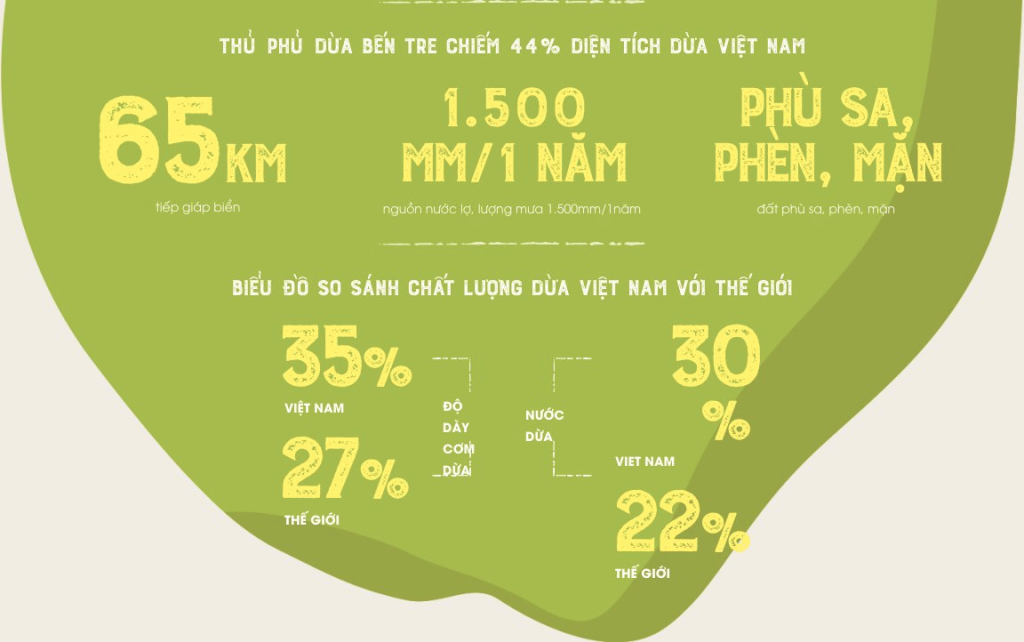News
Vietnamese fresh fruits: Coconut ‘Rising Star’ conquering the Chinese Market
After durian, a million-dollar treasure of Vietnam that makes the Chinese fascinated: exporting hundreds of thousands of tons, market share in the top 3
In 2024, Vietnamese fresh fruit and vegetable export activities achieved many successes in terms of market, output and export value. Contributing to the above growth must include fruit and vegetable products such as durian, mango, … and especially coconut. This fruit of Vietnam is favored by many countries, including China.

According to data from the Chinese Customs, in the 11 months of 2024, the country’s coconut imports reached 1.25 million tons, worth 649.55 million USD, down 44.6% in volume and 43.7% in value compared to the same period in 2023.
China imports coconuts from 7 countries and territories around the world. Of which, the main coconut suppliers for China include: Indonesia, Thailand, and Vietnam, with a market share of 98.71% of the total volume.

Vietnam is the third largest coconut supplier for China, reaching over 253 thousand tons, worth 74.7 million USD, down 40.3% in volume and 30.3% in value. The average coconut export price is 16.8 USD/ton.
Vietnam’s coconut market share in China’s total import volume increased slightly from 18.75% in 11M/2023 to 20.2% in the same period in 2024.
According to preliminary statistics from the General Department of Customs, the coconut export market share accounted for 5.29% of Vietnam’s total fruit and vegetable export turnover in 11M/2024, up from 4.16% in 2023.

The Ministry of Industry and Trade assessed that China’s reduction in coconut imports from Vietnam is only short-term. Because China has agreed to grant official export licenses for fresh coconuts from Vietnam from August 19, 2024. This has opened up a huge opportunity for the Vietnamese fresh coconut industry to access the large potential market of China.
Vietnam currently has about 200,000 hectares of coconut, ranking 7th out of 93 countries worldwide, according to the Ministry of Agriculture and Rural Development. About one-third of Vietnam’s coconut growing area meets US and European organic standards, mainly in the Central Coast provinces and the Mekong Delta (Tra Vinh, Ben Tre). This creates a great advantage for exporting this fruit.
The Vietnam Coconut Association forecasts that the export turnover of this item and processed products could reach 1.2 billion USD this year if the export process goes smoothly.
Of which, fresh coconut exports to China are expected to reach 250 million USD this year, accounting for 25% of the total export value of the whole industry. Last year, fresh coconut exports to this market reached 606,000 tons, up 120% compared to 2018, according to data from the China Fruit Association.
Experts say that Vietnamese coconuts are competitive with those from Thailand, thanks to the sweet and refreshing taste of the Siamese coconut variety, which is popular in many markets such as the EU, the US, Canada and South Korea.
In addition to fresh coconuts, China also favors processed products such as coconut milk, coconut milk, dried coconut and coconut jelly – a popular topping in drinks. The trend of consuming jelly, oil and coconut water is increasing due to health benefits. According to nutritionists, coconut jelly is rich in fiber, aids digestion and is good for the heart.


 Vn
Vn 中文
中文